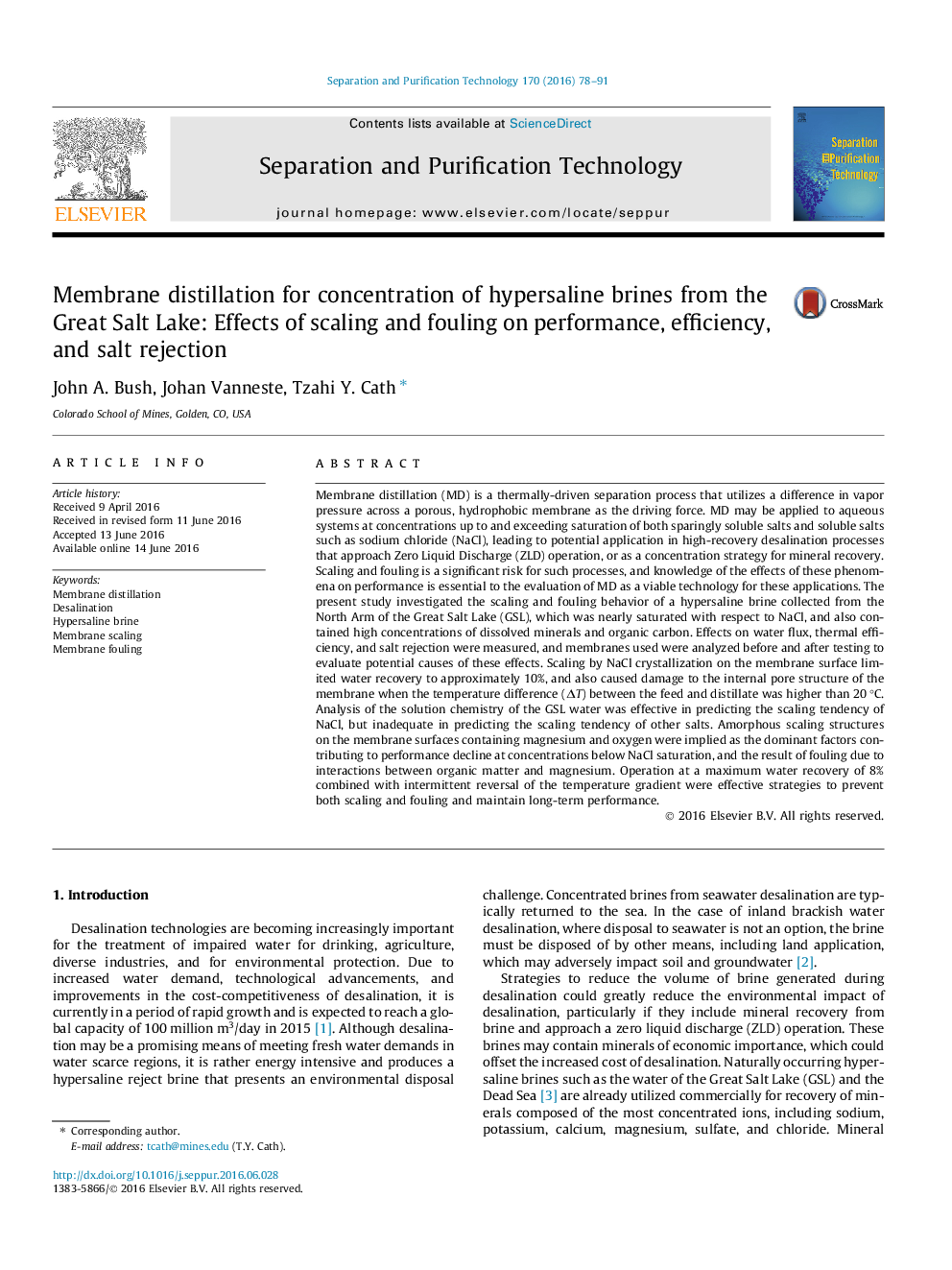| Article ID | Journal | Published Year | Pages | File Type |
|---|---|---|---|---|
| 639806 | Separation and Purification Technology | 2016 | 14 Pages |
•Direct contact membrane distillation was used to desalinate hypersaline brines.•Crystallization of supersaturated NaCl on the membrane was reversible.•Crystallization of supersaturated Great Salt Lake brine was irreversible.•Membrane pores were impacted by mineral crystallization during DCMD desalination.
Membrane distillation (MD) is a thermally-driven separation process that utilizes a difference in vapor pressure across a porous, hydrophobic membrane as the driving force. MD may be applied to aqueous systems at concentrations up to and exceeding saturation of both sparingly soluble salts and soluble salts such as sodium chloride (NaCl), leading to potential application in high-recovery desalination processes that approach Zero Liquid Discharge (ZLD) operation, or as a concentration strategy for mineral recovery. Scaling and fouling is a significant risk for such processes, and knowledge of the effects of these phenomena on performance is essential to the evaluation of MD as a viable technology for these applications. The present study investigated the scaling and fouling behavior of a hypersaline brine collected from the North Arm of the Great Salt Lake (GSL), which was nearly saturated with respect to NaCl, and also contained high concentrations of dissolved minerals and organic carbon. Effects on water flux, thermal efficiency, and salt rejection were measured, and membranes used were analyzed before and after testing to evaluate potential causes of these effects. Scaling by NaCl crystallization on the membrane surface limited water recovery to approximately 10%, and also caused damage to the internal pore structure of the membrane when the temperature difference (ΔT) between the feed and distillate was higher than 20 °C. Analysis of the solution chemistry of the GSL water was effective in predicting the scaling tendency of NaCl, but inadequate in predicting the scaling tendency of other salts. Amorphous scaling structures on the membrane surfaces containing magnesium and oxygen were implied as the dominant factors contributing to performance decline at concentrations below NaCl saturation, and the result of fouling due to interactions between organic matter and magnesium. Operation at a maximum water recovery of 8% combined with intermittent reversal of the temperature gradient were effective strategies to prevent both scaling and fouling and maintain long-term performance.
